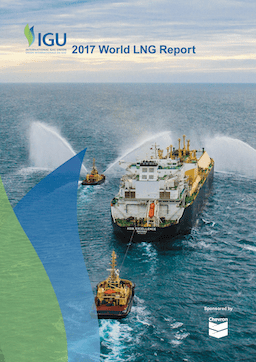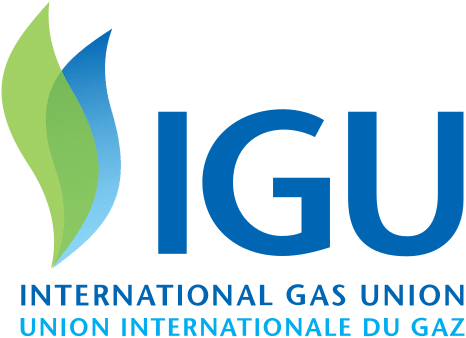
IGU World LNG Report 2017
Liquefied natural gas (LNG) experienced a dynamic 2016, with global trade reaching a record 258 million tonnes (MT), an increase of 13 MT over 2015. Supply ramped up at projects spanning the globe, from the United States to Australia, and LNG found new markets in a diverse array of countries. At the same time, delays and plant outages kept supply growth subdued. LNG prices remained below the cost of new supply as demand grows to reach balance.
As the advantages of natural gas in the global energy mix become increasingly apparent to governments, businesses and consumers around the world, 2016 saw some encouraging trends in LNG. The much-awaited tranche of US LNG production began with Sabine Pass Trains 1&2 entering commercial operation. The ramp-up in Australia continued as well, with Gorgon LNG Trains 1&2 and Australia Pacific LNG starting commercial operation, coupled with new train additions at Gladstone LNG and Queensland Curtis LNG. Keen interest in LNG was also evidenced by more than 879 MTPA of proposed project development, concentrated in North America, East Africa and Asia Pacific. On the demand side, LNG continued to find new markets as a fuel of choice for existing grids that have limited indigenous production, such as Egypt and Pakistan, with combined growth of 6 MT. New niche markets have also developed that prefer clean, flexible fuel for power generation, such as Jamaica and Malta. China’s LNG consumption increased dramatically, by nearly 35%, to around 27 MTPA.
At the same time, however, the two largest markets – Japan and South Korea – are showing signs of satiation, as nuclear, coal and renewables find their balance in the power mix. With a rebound in hydro-power reservoir levels, Brazilian demand for LNG was down 80% (4 MT), demonstrating the flexible value of LNG.
As LNG prices continue in a competitive range, opportunities for demand growth in 2017 abound globally. Trends in floating storage regasification units (FRSUs) and LNG bunkering are shaping the LNG industry. FRSU new-builds and conversions are expanding access for emerging LNG markets and will continue to help absorb supply. LNG is increasingly seen as a vital bunkering fuel for maritime transport as well. Last year, for example, the Port of Rotterdam installed its third LNG fueling berth, as the benefits of switching to natural gas become increasingly apparent. Switching to LNG in the port can reduce NOx emissions by up to 90% and SOx and particulate emissions by up to 100%. These trends must all be seen in a wider context. It is not an exaggeration to say that the increased uptake of natural gas has direct and positive impacts on the environment and on human health around the world. In a post-COP 21 world, gas must become an increasingly vital part of the future energy mix.
IGU continues to advocate vigorously for the benefits of natural gas, and the LNG industry plays a key role in expanding access to gas across the globe. The World LNG Report, a flagship publication of IGU first published in 2010 and now published annually, provides key insights into the LNG industry. It remains a standard desk reference on the LNG industry around the world.
Published on April 5, 2017 Download PDF (5 MB)Want to download this file?
Get access to download this file by filling up the form below.
By completing this form, I accept that IGU can store my business information. We may send you informational emails, but you can unsubscribe at any time.
